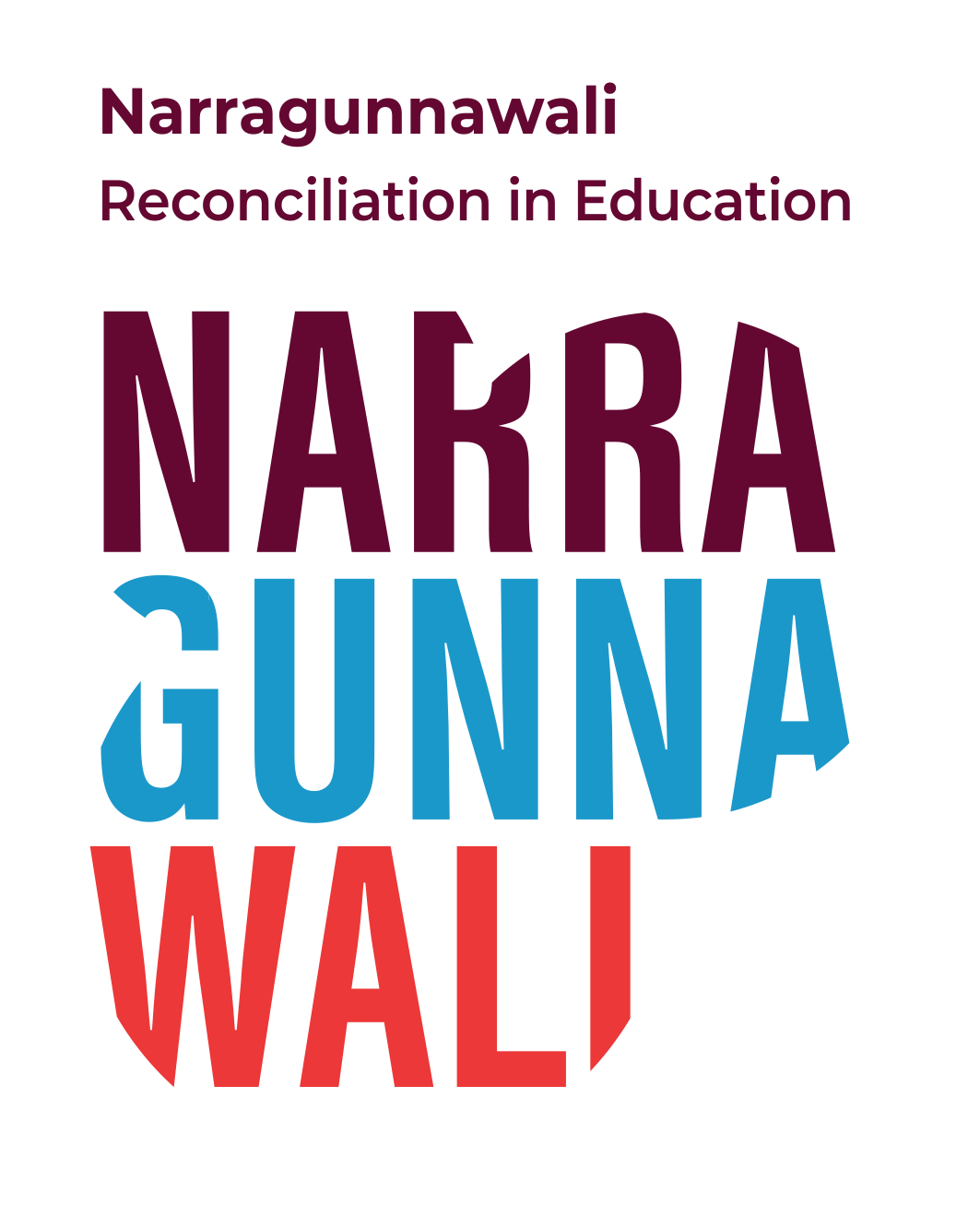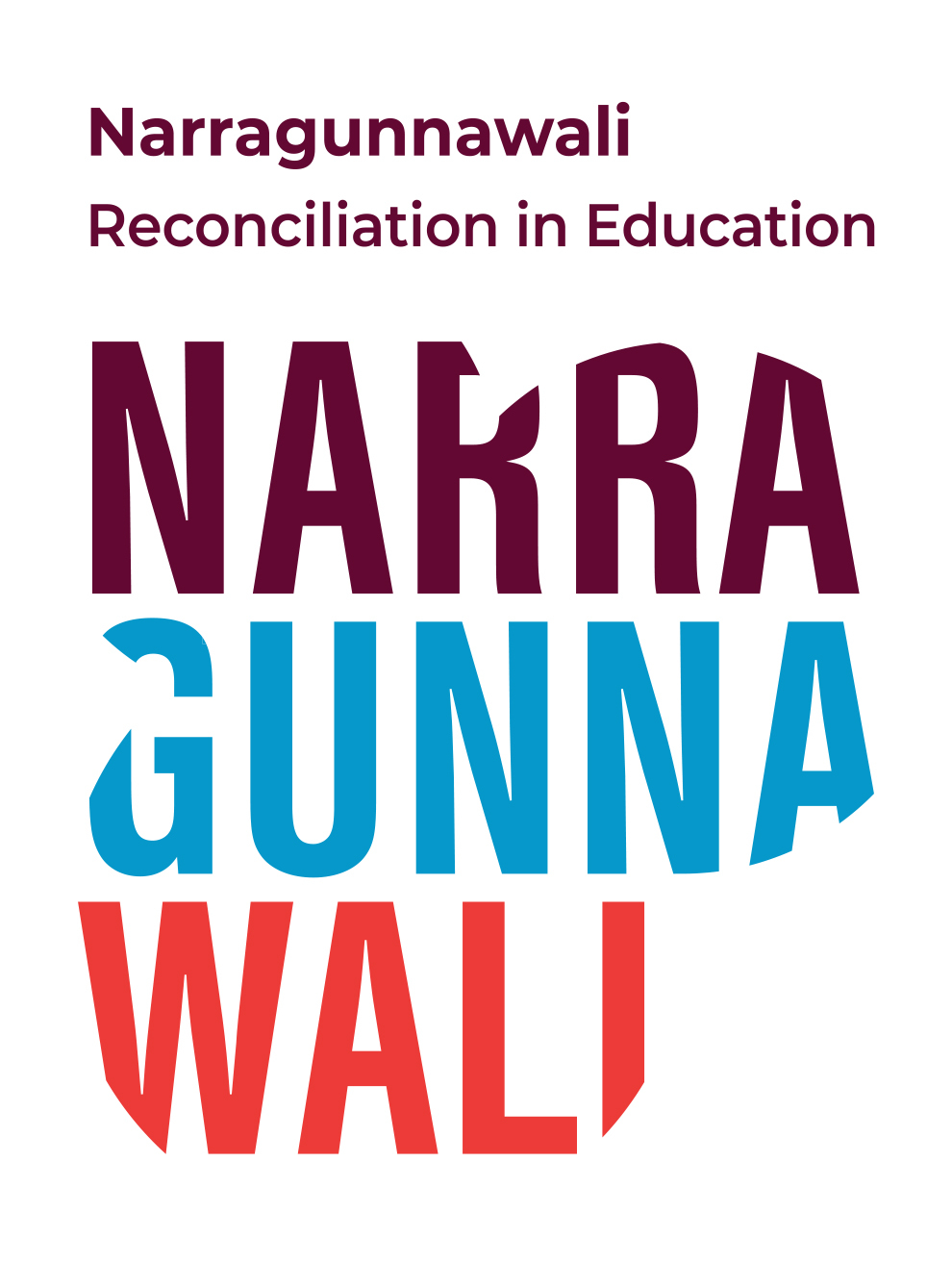A Guide to Using Respectful and Inclusive Language and Terminology
How we talk about reconciliation is just as important as the actions we take. Language is active and impacts attitudes, understandings, and relationships.
Using respectful and inclusive language and terminology is an essential part of reconciliation and strengthening relationships between Aboriginal and Torres Strait Islander peoples and the wider Australian community.
Always seek and listen to advice of your local Aboriginal and Torres Strait Islander community. Alongside this advice, use this guide to inform your written messages, such as your Vision for Reconciliation and Acknowledgement of Country, and in your teaching and everyday communications
Acknowledging diversity
Aboriginal and Torres Strait Islander peoples, cultures and identities are diverse. Always seek advice from local Aboriginal and Torres Strait Islander people about preferences and protocols for respectful language.
It is important to acknowledge the strength and resilience of Aboriginal and Torres Strait Islander cultures, remembering that each individual’s experience is varied and highly personal. Never speak on behalf of another person or share their experience without their permission.
Referring to Aboriginal and Torres Strait Islander peoples
|
Most appropriate: |
|
|
Sometimes appropriate: |
|
|
Never appropriate: |
|
The difference between ‘peoples’ and ‘people’
‘People’ (singular) refers to:
-
a single geo-cultural community (for example, Narragunnawali is a word from the Ngunnawal people, Traditional Custodians of Ngunnawal Country (where Canberra is located).
-
Aboriginal and/or Torres Strait Islander individuals (for example, Aboriginal and Torres Strait Islander people in our school community).
‘Peoples’ (plural) refers to diverse Aboriginal and Torres Strait Islander identities/geo-cultural community groups across Australia.
For example:
-
the Ngunnawal, Ngambri and Ngarigo peoples of the wider Canberra region
-
the diversity of Aboriginal and Torres Strait Islander peoples and cultures connected to Lands across Australia.
Capitalisation
Always capitalise ‘Aboriginal’ and ‘Torres Strait Islander.’
Also capitalise:
-
Indigenous
-
First Peoples/Nations
-
Elders
-
Traditional Owners/Custodians
-
Country or Land (when referring to an area of land, sea and sky associated with a distinct group of people or First Nations community) Capitalisation can also be extended to corresponding terms such as ‘Sea’ and ‘Sky’, when it is used in place of ‘Country’
-
Language groups or geo-cultural communities
-
Acknowledgement of Country, Welcome to Country, and the names of other cultural practices (particularly when the meanings or perspectives behind the words – such as ‘acknowledge’ or ‘welcome’ – are distinct in their Aboriginal and Torres Strait Islander cultural context).
Do not capitalise ‘reconciliation,’ unless naming Reconciliation Australia or referring to a formal program or document, like your Reconciliation Action Plan.
USE OF FIRST LANGUAGES
Like with all reconciliation work, consult with the local Aboriginal and Torres Strait Islander community when engaging in First Language activities.
Colonisation and systemic suppression of Aboriginal and Torres Strait Islander language use due to past government policies have impacted the practice and preservation of First Nations Languages. Anticipating access to First Languages may only sometimes be acceptable due to complex and ongoing revitalisation efforts for some languages and where other languages remain dormant.
Colonisation has influenced the development of new First Nations languages such as Aboriginal English, which is spoken by over 80 per cent of First Nations people across Australia. To be respectful of the cultural significance and practices of Aboriginal and Torres Strait Islander peoples, terms such as ‘mob’, ‘Aunty/Uncle’, ‘tidda’, etc should only be used by First Nations peoples or by those who have been given explicit permission from Aboriginal and Torres Strait Islander community members.
POSSESSIVE LANGUAGE
When referring to Aboriginal and/or Torres Strait Islander children, students, staff, or wider community members, avoid using possessive language such as ‘our.’
References such as ‘our First Nations students’ or ‘our First Nations community’ risk implying ownership over people, and do not recognise the self-governance and self-determination of Aboriginal and Torres Strait Islander individuals and communities. Such references can be reframed to ‘First Nations students within our school community’ or ‘the local First Nations community’.
Reference to Country/place according to Aboriginal and Torres Strait Islander perspectives is best described as relationships with rather than ownership of/over. For example ‘we acknowledge Kaurna people’s connection to this Land’ or ‘we acknowledge the Kaurna People as Traditional Custodians of this Land’.
References such as Australia’s First Peoples risk a paternalistic and possessive tone. Consider changing to First Peoples of Australia.
Avoiding deficit and dichotomous language
Reconciliation involves acknowledging and addressing the historical, inter-generational and continuing injustices and inequities Aboriginal and Torres Strait Islander peoples have faced since colonisation.
It is important to:
-
acknowledge the strength and resilience of Aboriginal and Torres Strait Islander peoples, cultures, and communities (keeping in mind individual preferences)
-
celebrate Aboriginal and Torres Strait Islander contributions in shaping a shared sense of national unity and identity.
-
draw on strengths-based language, and do not use patronising or paternalistic speech.
Deficit Discourse
Deficit discourse is language which is disempowering and harmful. It expresses a hierarchical view of cultures, perpetuating inequality, and inequity. No person or identity has a ‘deficit.’
Adopting a strength-based approach is critical to reconciliation, Aboriginal and Torres Strait Islander self-determination and agency, and fostering positive relations between First Nations people and other Australians.
For example, look at the difference between:
-
We will embed Aboriginal and Torres Strait Islander culture to help disadvantaged Aboriginal and Torres Strait Islander students (deficit discourse).
-
We will respectfully embed Aboriginal and Torres Strait perspectives in our curriculum so students see their cultures and identities represented (strengths-based language).
Understanding the true history of Australia and embedding Truth-telling opportunities is imperative when using appropriate strengths-based language and terminology.
Dichotomous Discourse
Dichotomous language relies on an us/them mentality, which is dated and unproductive. Language choices which divide Aboriginal and Torres Strait Islander people and non-Indigenous people are inappropriate. Instead, promote and build respectful two-way relationships.
Reconciliation is about working collaboratively with Aboriginal and Torres Strait Islander peoples, not doing things 'for them', 'to them' or ‘about them.’
Aboriginal and Torres Strait Islander peoples and cultures have survived for tens of thousands of years. They are not ‘in need’ of being ‘rescued,’ ‘empowered’ or ‘saved.’
CLOSING THE GAP
When referencing ‘closing the gap,’ add context to distinguish between the Closing the Gap strategy; the Close the Gap campaign; and fostering equality and equity more generally.
Closing the Gap is a government strategy towards addressing national socio-economic targets across areas that have an impact on life outcomes for Aboriginal and Torres Strait Islander peoples. In education, Closing the Gap can be contextualised by referencing one or more of the following targets, while recognising their interrelationship to all other targets:
-
Targets 3 – Children are engaged in high quality, culturally appropriate early childhood education in their early years
-
Target 4 – Children thrive in their early years
-
Target 5 – Students achieve their full learning potential
-
Target 6 – Students reach their full potential through further education pathways
Close the Gap is a campaign that aims to reduce the health and life expectancy gap between Aboriginal and Torres Strait Islander peoples and non-Indigenous Australians within a generation. When referencing the Close the Gap campaign clarify the ways and reasons for support.
‘Equality and Equity’ is one of the five dimensions of reconciliation in Australia and can be referenced when describing actions and aspirations towards addressing colonial injustices reducing relative disadvantage more generally. Consider strengths-based statements and language.
For example, look at the difference between:
-
Our school will close the education gap between First Nations and non-Indigenous students (more deficit discourse)
-
Our school is committed to fostering equal and equitable education opportunities and outcomes (more strengths-based language)
Recognising currency and continuity
Aboriginal and Torres Strait Islander peoples are connected to the oldest continuing cultures. Using only past tense to describe cultures and peoples, perpetuates the legal fiction of ‘terra nullius’ (land belonging to no one).
Colonisation is very recent compared to Aboriginal and Torres Strait Islander peoples’ continued presence on, and connection with, Country. The reconciliation movement is even more recent.
Further guidance
For further support, engage with:
-
the Reconciliation in Education: Walking the Talk on-demand webinar and accompanying professional learning resource.
If your local Aboriginal and Torres Strait Islander community advises any preferred terms are different from the recommendations, please contact us before submitting your RAP.

